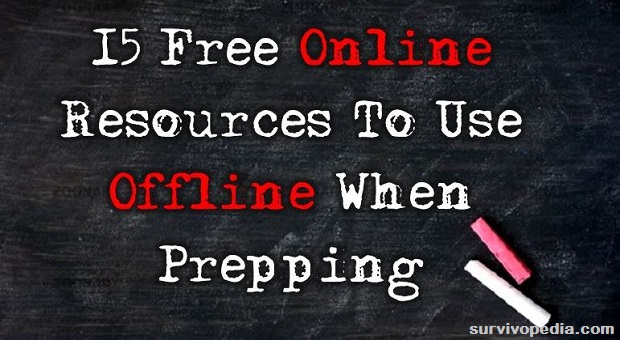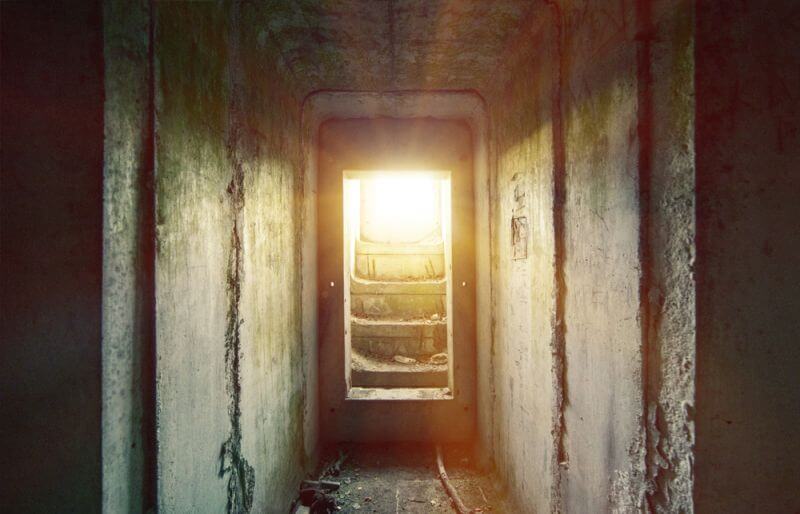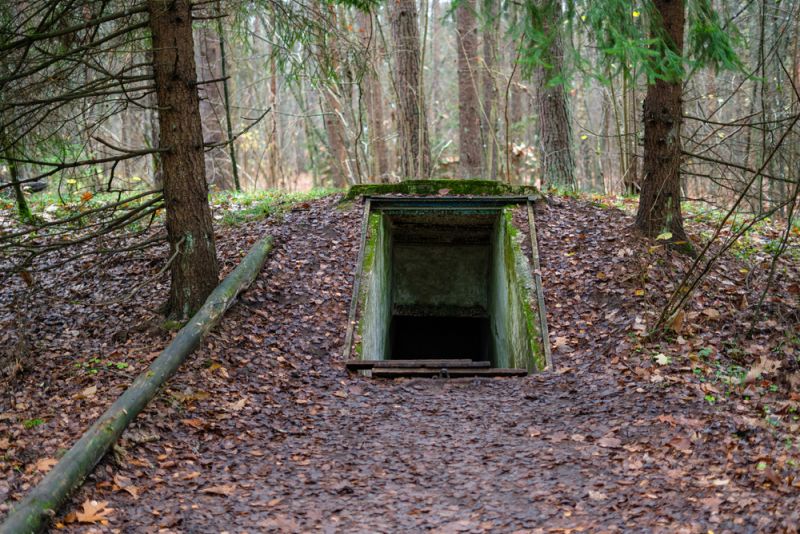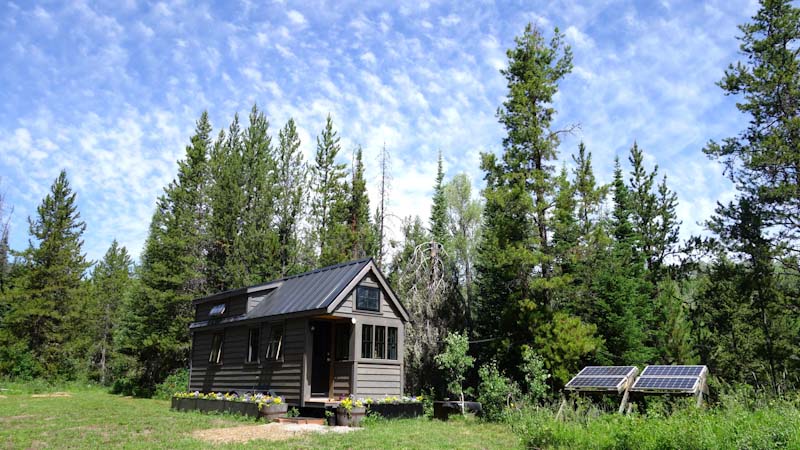There are many fantastic electronic resources available for self-reliant folks of all types. One of the major downsides to many of them is that they need internet access to function, which greatly limits their utility in emergencies where internet access is very often down.
Because of this and the fact they need electricity to work, there was a time when preppers refused to trust any equipment that ran on batteries or had a power cord. Fortunately, technology has come a long way since that time.
Preparing Your Electronics for Survival
Some electronics are certainly better built and more rugged than others, and anything not specifically hardened against EMP could be damaged by it, but some portable electronics, such as many mil-spec handheld amateur radios, are very rugged and well shielded against EM (electromagnetic) radiation.
If they were not well shielded, they would be damaged when powerful radios transmitted in close proximity to them. Thanks to lightweight EM shielding in the form of convenient and economical “blackout” or EMP bags, it is now possible to attain a reasonable level of shielding (45-72dB in the 30MHz-10GHz range) for portable electronics.
Many shielded envelope products are also waterproof and keep out dust as well, increasing their utility. Battery and renewable energy technology have also improved substantially in the last decade.
Combine these factors with ever smaller and more robust smart phones, tablets, and mobile computers packing mind-blowing arrays of sensor technology and you have some pretty effective tools for survival.
I certainly do not believe that electronics should be viewed as a replacement for paper hardcopies of books, laminated documents, identification, licenses or maps printed on water-resistant paper or Tyvek.
It is very important to memorize important information, to develop skills and to have non-electronic copies of mission critical maps, radio frequency lists or radio band plans, insurance policies, documents and coded bug out plans ready to go, but you can only carry so much gear on your person and paper is heavy.
Having electronic resources is far better than leaving important information or leaving important documents behind. A single extreme Micro SD memory card can hold libraries of valuable information, yet is small enough conceal almost anywhere. Combine rugged flash memory with rugged or rugged-cased small portable electronics such as smart phones, tablets and even small notebooks and you end up with some powerful tools.
The vast majority of emergencies occur while services are still at least partially functioning. If utilities are up, and emergency services are still doing their job, a PLB (personal locator beacon), hybrid PLB/GPS/satellite messenger or satellite phone is arguably among the most valuable pieces of equipment you can pack since it can be used to call for rescue and transmit your coordinates from anywhere on the planet.
The major issues in using this type of gear is that many people cannot afford it and many online resources do not function without internet access, making them useless during catastrophic emergencies.
Fortunately, many free resources exist that can be used offline, meaning that they will still work without internet access.
Free Online Resources to Get Now for Later Use
1. Evernote
Evernote and the small army of apps which add additional functionality to Evernote are designed to help you remember ideas and information.
Evernote and related apps can be used to gather web clippings, URL’s, .PDF’s, audio, video, photos, email, scanned documents and even handwritten notes and drawings, annotate them and save them into folders and collaborate, making Evernote a fantastic medium for accumulating, curating and searching an ultra-portable digital survival library that occupies very little space and weight.
It can be configured to save files locally so you can access your notes and files even without internet access.
Evernote is free, but paying for “Pro” gives you loads of additional functionality oriented mostly toward businesses and people who use it to collaborate on projects.
So install it for free and start building a digital survival library. Next time you see an article you would like to save, clip it and save it for study later on.
2. Nitro Reader 3
Nitro Reader 3 is a .PDF reader which can send .PDF’s straight to Evernote and has greater functionality than any other free reader. A vast array of free books and ebooks and manuals are available in .PDF file format, making a free .PDF reader an important part of a digital survival library.
Like most free apps or software, power users have the option to pay in order to unlock additional features. Nitro Reader 3 can be used to create .PDF’s, collaborate and review them or sign and share them.
Paying for “Pro” unlocks additional features such as markup text, sticky notes and summarize contents which all aid in annotating .PDF
3. Military Manuals
Unclassified military manuals are available for free in .PDF format on dozens of websites. Once downloaded to your device or computer, .PDF’s can be read offline and are a fantastic resource for education, training and reference.
4. Project Gutenberg
Copyrights expire in the US. Once copyrights expire, books are no longer protected by US copyright law so they can be freely copied and distributed.
Other countries are trying to get the US to join to TPP (Trans Pacific Partnership) and to join, and if we do, the copyright protection term would be extended, killing projects like this one, so I would not procrastinate downloading older books with expired copyrights. Choose from over 46,000 free books.
5. Digital Book Subscription Services
DBSS’s such as Scribed, Kindle and Oyster pack half a million ebooks which can be saved locally and accessed offline.
These are paid services, but some have no limit to the number of books you can download and the first month is free.
6. Proclivus
Proclivus is a free survival-oriented curated RSS feed reader. It enables you to see articles from your favorite survival websites or blogs, minus the advertising, on a single feed or page.
While Proclivus needs internet connectivity in order to display feeds, you can use a web clipper to save pages or portions of pages to your library where you can curate them and study, search or read them offline when you have time or in areas without internet access.
7. USGS
The US Geological Survey has free topo maps available for download. This is a fantastic and much underused resource that is paid for by your tax dollars. Take advantage of it.
For maps that I want paper copies of, I stop by the closest university and have them print custom-centered maps in the scale I want on water-resistant paper. It only costs $6-$12 a map, which is amazing since the paper and ink probably cost that much to run their giant plotters.
It is either a community service or the university is not so great at math.
8. Facebook Survival Groups
Clearly Facebook groups will not work off-line, but many of them have large libraries of .PDF books on survival, military manuals and other fee resources, so check them out and start downloading.
9. Winchester Ballistic Calculator
It is exactly what its name implies, a ballistic calculator to assist you in determining hold over or elevation and windage for long range marksmanship, and it is free. Install it, tell it what you are shooting and it will display a ballistics table for you. Then you can input your conditions and it will help you set up the shot from there.
10. ARRL & ARES
The Amateur Radio Relay League is the principle amateur radio organization in the US. The Amateur Radio Emergency Service is a group of amateur radio enthusiasts who respond to emergencies to provide communications.
If you plan to use amateur radios in emergencies, you will need to know what frequencies to listen to for information in your area.
These organizations can help you get your license and find local clubs or ARES chapters who will have emergency radio band plans and can put you in touch with local emergency frequency coordinators. These coordinators will indicate who should use what frequencies in order to keep communications flowing and orderly when phones and cell towers are down.
11. Free Apps & software
CNET’s download.com, the Google Play Store, the Apple App Store and the Microsoft store are all sites that you can search for free apps and software to install. Just make sure that you read and understand the privacy policy for each app before you install it.
Choose apps that will help you, that can function offline. Just make sure that when you install free software, you do a custom install and uncheck any boxes offering to install software other than the program you are trying to install otherwise you will end up with annoying toolbars, popups and malware.
12. Forums
Survival and prepping forums and blogs often have extensive libraries of .PDF files and other resources that can function offline.
13. Encryption
Windows is not free, but it comes with Bitlocker encryption software built in, so you may already have it. You can also download free encryption software. Get it, learn it and use it.
14. Product Manuals
Many companies post .PDF’s of instruction manuals for their products. They can be invaluable in trying to make repairs in the field or without internet access, so download manuals for any your gear that has them available.
15. FEMA
The Federal Emergency Management Agency has applications and courses available for download including Floodplain Mapping Software, and a number of training courses on emergency preparedness.
This list of free resources should get you started and keep you busy for a while, but I would like to hear what you have in your libraries in the comments section.
This article has been written by Cache Valley Prepper for Survivopedia.









Pingback:15 Free Online Resources To Use Offline When Prepping | Survivalist Basics | Be Prepared For Anything! | January 5, 2015
|
Clem | January 5, 2015
|
I use this link to get several free daily eBooks from Amazon.
http://prepforshtf.com/free-kindle-books-limited-time-offers/#.VIXNpsmneI8
I let my Kindle for PC software download them and then use Calibre book reader to convert them to pdf for either printing or long term storage.
Cache Valley Prepper | January 5, 2015
|
That’s a great resource, thanks, Clem!
Barbara | January 5, 2015
|
This is awesome information, especially for a non-techie person like I am. I will take advantage of this for sure, especially Evernote and the Nitro Reader 3. This will save me a lot of time and frustration, so thank you very much for posting it!
Cache Valley Prepper | January 5, 2015
|
Thanks, Barbara.
wolphene | January 5, 2015
|
I find hardcopy books more comforting and enjoyable than ebooks as I can make notes in the margins of my books, if needed. I can also litter the pages with Post-It notes when the margins are fully notated.
I have gathered books on making useful items, like blacksmithing, sewing, cooking and dehydrating foods (human and pet foods), leatherwork (for clothing, footwear, equipment, etc), netmaking, braiding (for ropes and equipment), weaving and basketry, and other assorted interests. If nothing else, my family and I won’t be bored for something to do when SHTF! And what we make in excess can be bartered for something somebody else has made or stocked up on.
Cache Valley Prepper | January 5, 2015
|
I agree Wolphene. There just something comforting and seemly more permanent about paper and ink to me. That is part of what attracted me to Evernote … the ability to integrate my paper and digital libraries and even my handwritten notes. I have decades of handwritten notes that I am now using the Fujitsu ScanSnap Evernote Edition scanner to turn into easily searchable digital notes. I like the idea of getting rid of my file cabinets. 🙂
Paper books, note and maps will always have a place in my library and kit. I just wish they were smaller and lighter. Even if you need a magnifying glass to read them some day, field guide sized books are indispensable. I am in the process of compiling a list of paper books as a resource to curate survival libraries. I would be interested to hear everybody’s top picks for pack and field-friendly books and manuals. For this application, books or manuals printed on small format, water-resistant paper using smaller type sizes are most useful. If anyone would like to give input, I’ll follow this feed or you can email me at [email protected].
Sharon | January 14, 2015
|
I recently purchased a book from National Geographic. “Extreme Weather Survival Guide” by Thomas M. Kostigen It explains the impending disaster, tells you what to do and what not to do and how to prepare. 382 pages on sturdy water resistant paper. It covers “Wet”, “Dry”, “Hot”, “Cold” and all conditions resulting from them. You may find it very informative. I did.
Dan | January 7, 2015
|
Be aware if you are using windows 8 or higher and also using the Kindle APP that your Kindle books are NOT stored on your computer anymore. Instead they send portions of the book you are reading and store the rest of the book in the cloud.
Download the old Kindle Program to download your Kindle books. It will install on Windows 8. That way your books are stored in the documents folder under My Kindle.
Back up your My Kindle folder to a thumb or external drive periodically and store it in a Faraday cage.
Pingback:How To Easily Convert Your PC To Linux | Survival skills, survival guns, survival guide | April 17, 2015
|
Pingback:Prepper Expos On The Come Up. Do You Go? | Survival skills, survival guns, survival guide | April 24, 2015
|
Pingback:How To Easily Convert Your PC To Linux | August 1, 2015
|
Pingback:Uncommon Communication For Survival | Survivopedia | February 12, 2018
|